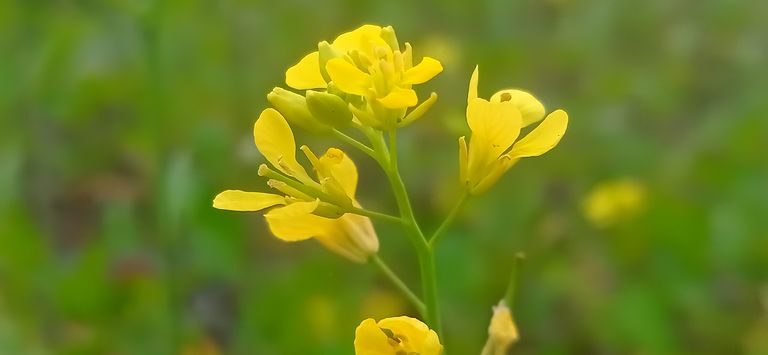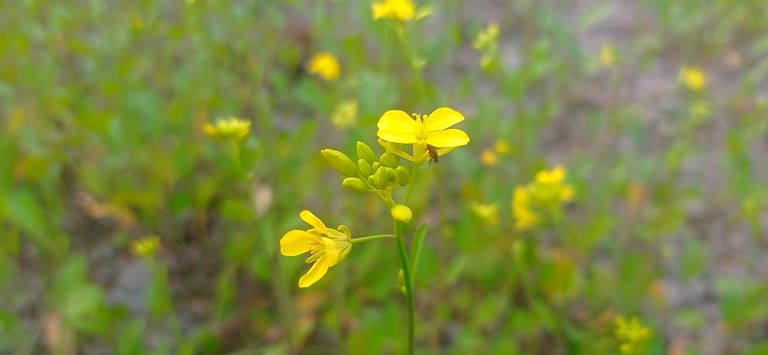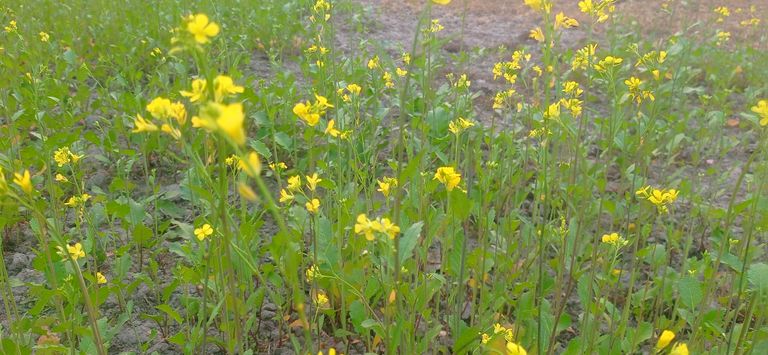Mustard is a widely grown plant, known for its edible seeds that are used both as a spice and for producing mustard oil. It is a member of the Brassicaceae family, which includes other popular crops such as cabbage, cauliflower, and broccoli. Mustard plants are hardy, fast-growing annuals, and they are cultivated in many regions across the world due to their economic and nutritional value.
Varieties of Mustard
There are three primary types of mustard seeds that are commercially grown: white mustard (Sinapis alba), brown mustard (Brassica juncea), and black mustard (Brassica nigra). Each variety has distinct characteristics:


White Mustard (Sinapis alba): Known for its mild flavor, it is most commonly used in the production of mustard condiments and is also utilized in salad dressings.
Brown Mustard (Brassica juncea): This variety has a spicier, more pungent flavor and is frequently used in spicy mustard condiments, such as those found in Indian cuisine.


Black Mustard (Brassica nigra): With a sharp and hot flavor, black mustard is used mainly in traditional spice blends, particularly in Indian cooking, and is less common in condiment forms due to its intense taste.
Climate and Soil Requirements
Mustard plants grow best in temperate climates, thriving in cool conditions. The ideal temperature for mustard cultivation is between 10°C to 25°C (50°F to 77°F), making spring and fall the most suitable seasons for planting in many regions.



The soil for mustard should be well-drained and rich in organic matter. A slightly acidic to neutral pH range of 6.0 to 7.5 is ideal. It can tolerate a variety of soil types, including sandy loam, but it grows best in soils that are deep and fertile.
Planting and Propagation
Mustard is typically grown from seeds. In regions with a temperate climate, the seeds are sown directly into the soil after the last frost in spring. In warmer climates, mustard can be planted in late fall or early winter, as it grows quickly. The seeds are small, and the planting depth is shallow—about 1 to 1.5 cm (0.4 to 0.6 inches). For optimal growth, the plants should be spaced 15 to 25 cm (6 to 10 inches) apart, depending on the variety.



In areas with more extreme temperatures, mustard is often grown in rotation with other crops, such as wheat or legumes, to improve soil health and reduce pest and disease pressure.
Watering and Maintenance
Mustard plants need a consistent supply of water, especially during the germination phase. However, they are relatively drought-tolerant once established, and over-watering can lead to root rot. Ideally, the soil should be kept moist but not waterlogged.


Weed control is essential, as mustard plants are somewhat sensitive to competition. Farmers may use mulching, mechanical cultivation, or herbicides to manage weeds. Additionally, pest control is important. Mustard plants are vulnerable to aphids, flea beetles, and cabbage worms, so timely interventions with natural predators or insecticides are recommended.


Harvesting
Mustard is typically ready for harvest around 90 to 100 days after planting, depending on the variety and growing conditions. The plants are harvested when the seed pods turn yellow and dry out, signaling that the seeds have matured. The seeds are then harvested using mechanical harvesters or by hand, depending on the scale of the operation. After harvesting, the seeds are cleaned, dried, and stored for further processing.


Uses of Mustard
The most common uses of mustard seeds are in the preparation of mustard oil, mustard powder, and mustard condiments. Mustard oil is highly valued in cooking, particularly in South Asia, due to its unique flavor and high smoke point. Mustard seeds are also used in pickling, seasoning, and as an ingredient in various traditional dishes across different cultures.
In addition to its culinary uses, mustard also has agricultural benefits. It is used as a cover crop to improve soil fertility and prevent erosion, and mustard plants can also serve as a source of biofumigants, helping to suppress soil-borne pests.
Conclusion
Mustard is an important crop with diverse applications, from culinary uses to agricultural benefits. By understanding the cultivation methods, farmers can optimize yield and quality, contributing to the widespread popularity of mustard products around the world.
So far Today...
Stay Home
Thanks for Your Time Friend.
♥♥♥♥♥♥
Ok
See you Again in a New blog.
Thanks for being with me.
Plese Follow Me......
@mspbro
★★To contact me★★
Subscribe My 3speak Channel https://3speak.online/user/mspbro
Follow me Twitter https://twitter.com/mdsumonpra
Add me Facebook https://www.facebook.com/sumon.mim84